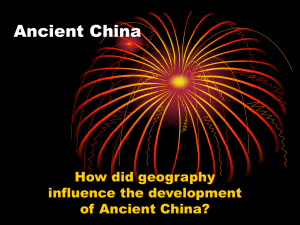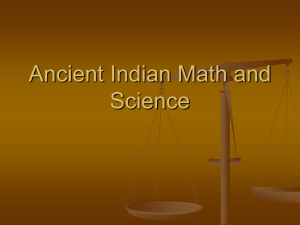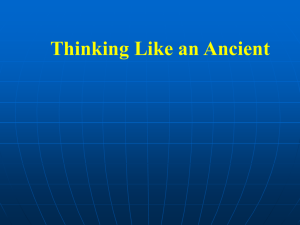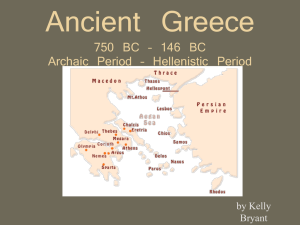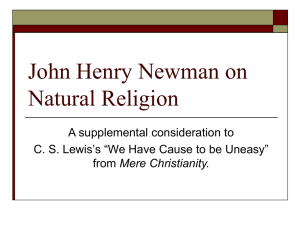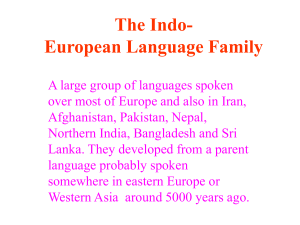Systems of Cities
advertisement
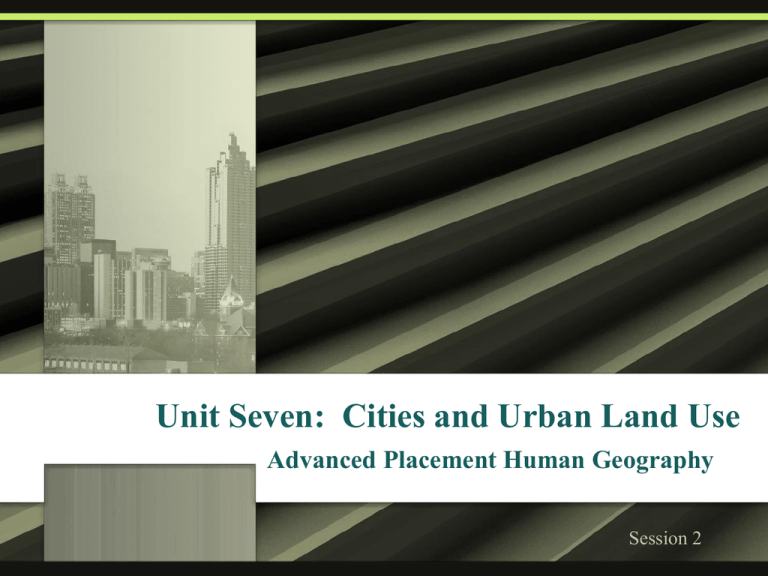
Unit Seven: Cities and Urban Land Use Advanced Placement Human Geography Session 2 SYSTEMS OF CITIES Systems of Cities • What determines the growth of villages into towns or towns into cities? Growth is dependent on: – political factors – cultural factors – economic factors Systems of Cities • Example of an economic factor contributing to growth: – A settlement located on a good harbor may grow through trade. Systems of Cities • Example of a cultural factor contributing to growth: – A town may establish itself as a cultural center by fostering: • libraries • museums • theatres • universities Systems of Cities • Example of a political factor contributing to growth: – A decision as to where to locate the capital may cause one town to grow and provide specialized businesses and employment opportunities. – A town not chosen as the capital could lose population, businesses, and employment. Systems of Cities Geography plays a key role in determining urban growth because location and topography influence where people settle, causing some cities to grow and other to stagnate. Origin and Evolution of Cities How did cities originate? • It is difficult for us in the modern world to imagine life without cities. • Cities, in terms of human history, are relatively new. How did cities originate? • The first agricultural revolution, also known as the Neolithic Revolution, occurred approximately 10,000 years ago. • It led to permanent settlements, but the communities remained small and simple. How did cities originate? • Job specialization began to occur. – Some people continued to be farmers. – Others became craftspeople. – Some became government officials. – Some became religious leaders. How did cities originate? Government buildings appeared on the landscape and villages became more diversified. The Role of Government The Role of Government • The period between 4000 2000 B.C.E. is called formative era for both development of states urbanization. and the the and The Role of Government • As the more complex settlements grew, the need for central authority increased. • As a result, states (organized territories under governments) appeared. The Role of Government • States grew in the following areas along the: – Nile River (Egypt) – Tigris and Euphrates (Mesopotamia) – Indus River (South Asia) Rivers Cities of the Indus River Valley Civilization Only a well-organized government could have maintained such carefully structured cities. The Role of Government • Other early civilizations appeared: – along rivers in East Asia (early China) – around the Aegean Sea (forerunners of the Greeks) • All of these civilizations had major cities that increased in size and complexity as farming techniques improved and trade developed. Function and Location of Ancient Cities • Agriculture had to be planned and controlled so as to guarantee a flow of food into the city, especially once irrigation developed. Function and Location of Ancient Cities • Governments began to: – collect taxes – build fortified walls to protect the city from invaders Function and Location of Ancient Cities • City sites were chosen for their: – defensibility – location near productive farmlands along rivers – availability of water for farming and transportation Function and Location of Ancient Cities Less accessible, more isolated places were at a disadvantage when it came to defensibility and trade. Function and Location of Ancient Cities Job specialization and social inequality grew along with the need to acquire, store, and distribute food. Function and Location of Ancient Cities A group of urban elite (decision makers and organizers) controlled the resources and, sometimes, the lives of others. Function and Location of Ancient Cities • The urban elite: – saw that the gods looked favorably upon the people and food production – developed a system of writing – helped organize resources Function and Location of Ancient Cities • The urban elite: – codified laws – organized the construction of public buildings such as: • temples • government centers • granaries for storing food Function and Location of Ancient Cities • Function of ancient cities: – Centers of power—headquarters for government officials Function and Location of Ancient Cities • Function of ancient cities: – Religious centers—priests, temples, and shrines Function and Location of Ancient Cities • Function of ancient cities: – Economic centers—markets, traders, wealthy merchants Function and Location of Ancient Cities • Function of ancient cities: – Educational centers—teachers and philosophers for the urban elite (the leaders of the city) How large were the ancient cities? • Estimates indicate that the cities of Mesopotamia and the Nile Valley had between 10,000 and 15,000 inhabitants. • The food supply would not have supported a larger population. Key Terms to Review • • • • • • Systems of cities Political factors Cultural factors Economic factors Topography Neolithic Revolution • Job specialization • • • • • • • Formative era States Civilization Fortified walls Social inequality Urban elite Ancient cities
